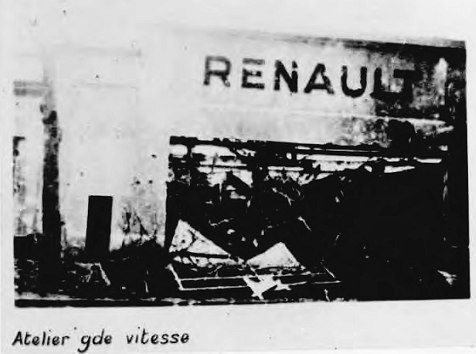
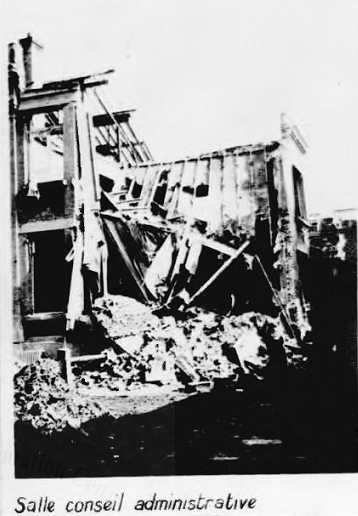

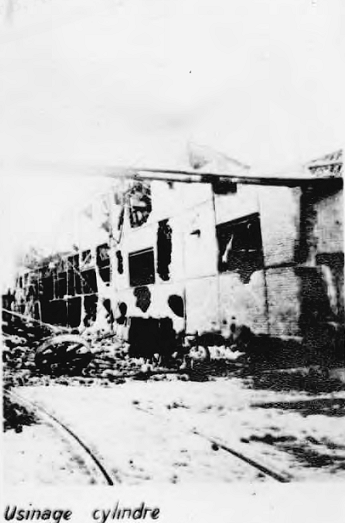
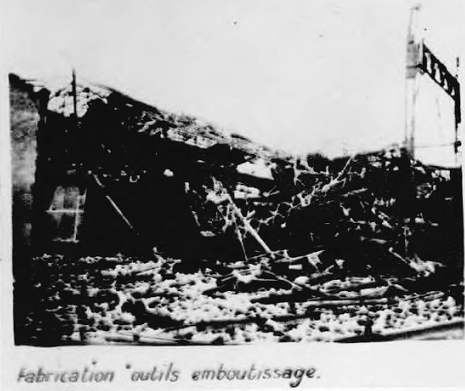
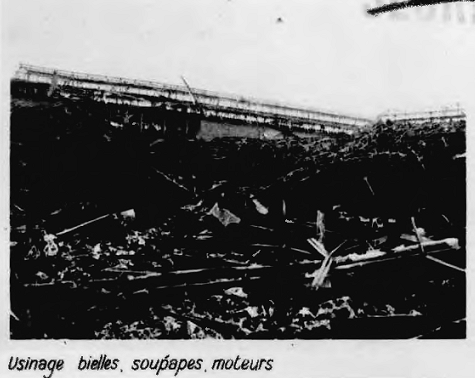
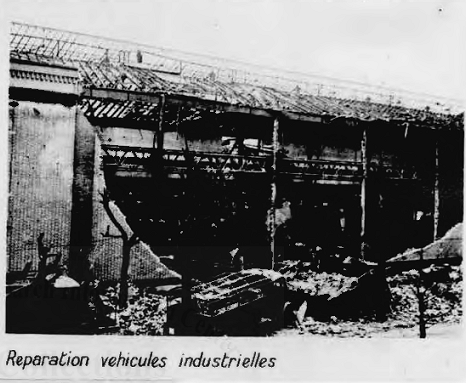

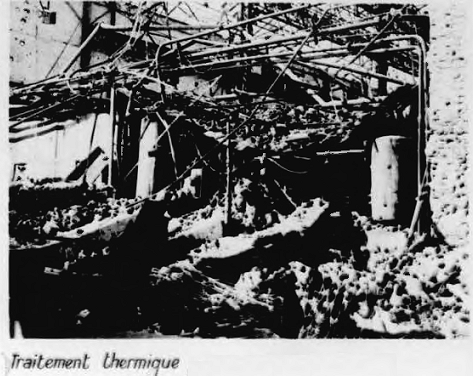
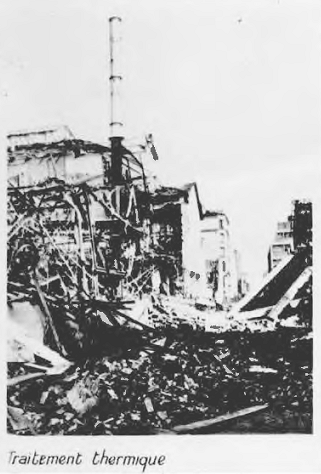
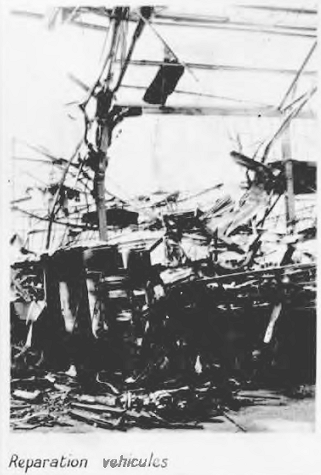
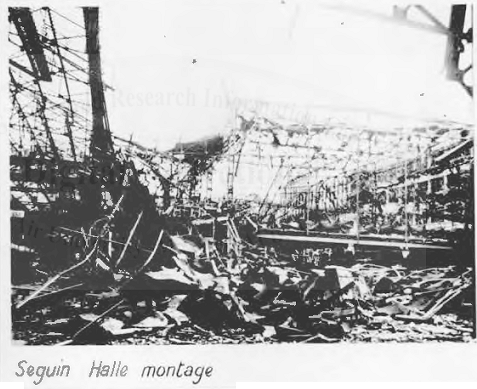
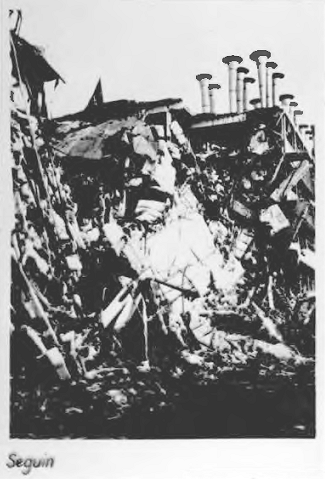
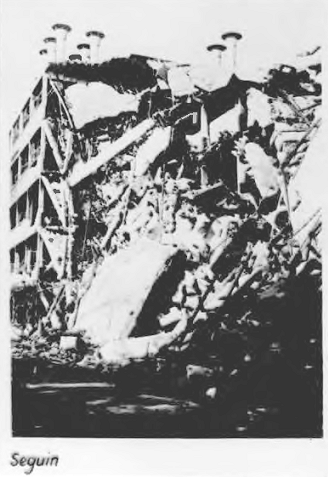
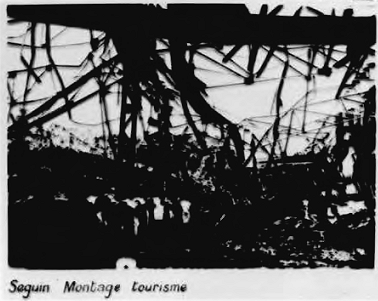

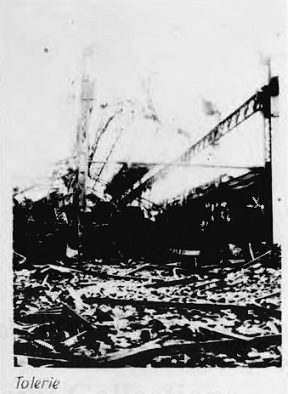
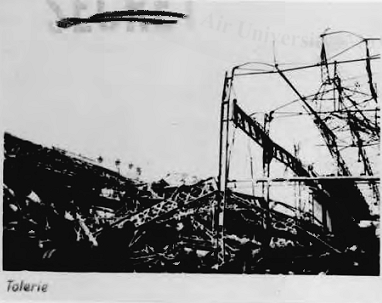

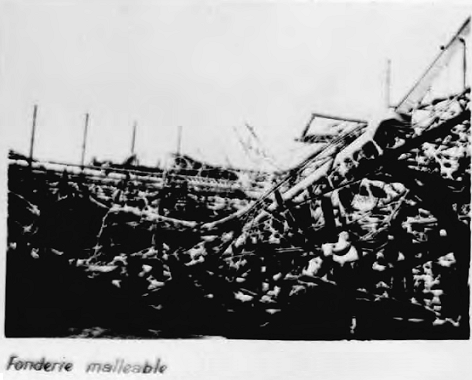


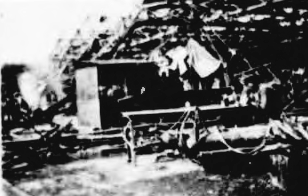
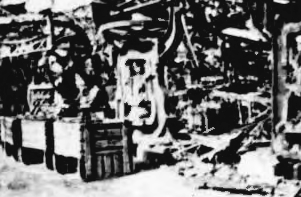
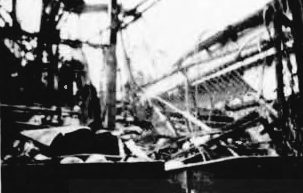
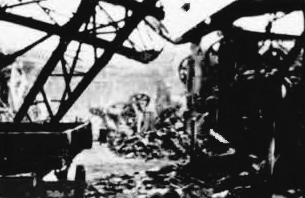
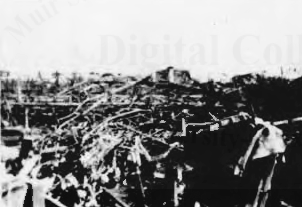



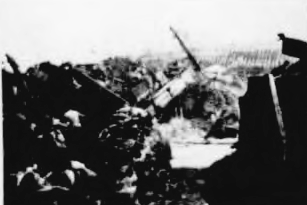
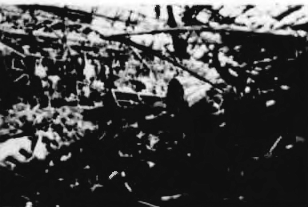
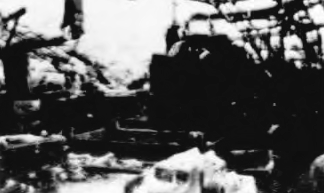
A.W.P.D.-42Destructive Effect of Bombs |
The Attack on the Renault Factory
An Example of the Effectiveness of Bombing Units of Enemy Industry
Properly selected and fused bombs will destroy any known industrial structure to such an extent that repair becomes virtually impossible. It is, of course, necessary to distribute such bombs in sufficient quantity to insure the degree of destruction desired. Examination of the accompanying photographs indicates that the problem of restoring the particular structures illustrated to an operating condition is a more difficult task than initial construction of new industrial structures. The mass of twisted steel left as a result of these attacks is itself quite worthless except as scrap and must be laboriously removed before a new structure can replace it.
On the following pages there will be found details of the Renault raid.
– – – – – – – – – – – – – – – – – – – – – – – –
THE RENAULT RAID
On the night of March 3/4 Royal Air Force Bombers attacked the Renault plant in the suburbs of Paris. While the bombing accuracy of RAF Squadrons does not measure up to the bombing accuracy of AAF Squadrons then a similar force is directed against a specific objective such as a manufacturing plant, nevertheless sufficiently good results were obtained to give an indication of the effectiveness of an air attack carried out against an important unit of enemy industry.
The Renault Plant, covering 296½ acres on the north bank of the Seine, was the largest single armament, truck and tank works in France. The buildings were of Light, one story construction and not particularly inflammable.
At the time of the British raid this plant was reported to be employing 14,000 workmen and producing from 750 to 1,000 motor trucks per month, plus at least 100 tanks and 300 airplane engines, all for the German Army.
The raid was made on a clear, moonlight night with perfect visibility. Two hundred and forty-nine planes were used and 462 tons of bombs were dropped, including twenty-six 4,000 pounders. Two airplanes did not return.
Pictures taken immediately after the raid and subsequent photographs show various degrees of damage to some 49 buildings. Destruction of such important shops as the press, machine tool, connecting rod and valve, vehicle repair, assembly and pattern, appears to have been nearly complete.
It has been stated that between five and six months after the raid, the Renault plant was producing approximately 500 trucks per month. To this statement should be added the further detail that the return of the Renault plant to this state of efficiency was brought about by the use of other manufacturing facilities as subcontractors to turn out assemblies. In other words this target was of such importance to the enemy that the facilities of other manufacturing establishments were commandeered and labor was impressed to provide emergency replacement facilities. Thus Renault became a central assembly establishment. Renault has not returned to its role as a prime manufacturer .
The attack on the Renault plant cost the British two aircraft and 462 tons of bombs. The results and effectiveness of this bombing are shown by the attached photographs. While they do not prove the impossibility of placing the plant in operation again, they do show that the time required would be the same amount of time as is required to build a new plant plus whatever time is required to clean up the debris. Assuming that highest priorities in labor and materials were given to the task of reconstructing Renault into its original role as a prime manufacturer, with the inevitable strain that would follow the adoption of such measures, this company might go into production in November 1942. Upon completion of such a project of reconstruction another attack might be directed against the plant. It is safe to assume that a second project of reconstruction would require considerably more time than the first, especially if there were other similar projects requiring labor and materials priorities.
The construction of the Renault plant is fairly typical of an airplane factory, an aircraft engine factory or a munitions plant. In order to insure complete destruction of this type target this plan provides for recurrent full scale attacks every two months.
– – – – – – – – – – – – – – – – – – – – – – – –
































